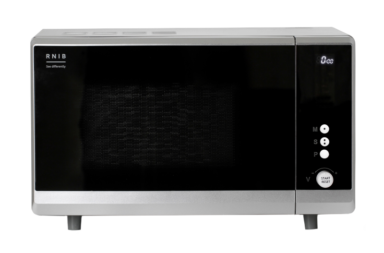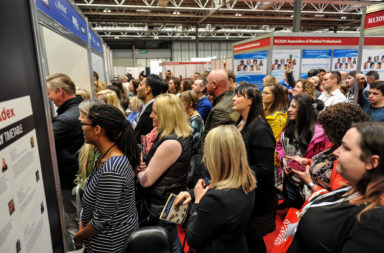Everyone needs their home to be comfortable and pleasant; a place where they can really relax and be themselves. Making adaptations to cope more easily with disability doesn’t have to turn the home in to a hospital.
In recent years, manufacturers and designers have made much greater efforts to incorporate comfort aspects into the sorts of equipment and adaptations needed by disabled people to make their home environment more suitable for their varying needs. The reason for this is simple; primarily, that as the population ages, more and more of us require those little tweaks to make things easier – and the mainstream market in which this need exists, doesn’t recognise that these issues are connected with the broad term ‘disability’. In this sense, older people, or those people with lifestyle related issues avoid purchasing products they deem to be for ‘disabled people’.
The upside to this has been a flourishing of sensitive design that has moved away from clinical looking objects and the introduction of softer colours, comfortable textures and even style – enabling people to balance their needs and tastes as they individualise their homes.
Here’s our room-by-room guide to a few of the adaptations available.
Kitchen
Surfaces and storage
Although the kitchen is usually the place where the family meets for meals, it is also a functional room and so it’s important that it’s fit for purpose. You need to think about how you prepare food and also how you’ll store food items and utensils.
Height is an important consideration. There can be a significant difference between the needs of a wheelchair user and somebody that stands. Unless the wheelchair user is the only person that will prepare food in the kitchen, simply lowering the work surfaces is not the answer since they’ll clearly be too low for other adults and could also be unsafe for very small children who will grasp at anything within reach, irrespective of danger.
Rise and fall worktops and cupboards move up and down to suit the user and can be designed for roll-under purposes. Cupboards can incorporate carousels that mean that stored items can be brought to the front with a quick turn. Other systems utilise a swing out mechanism or a slideout drawer for similar results, especially in cupboards positioned in corners that can prove decidedly deep (and awkward).
Sink
The sink can also be positioned on a rise and fall mechanism and taps can be fitted with long lever controls for people with reduced grip – and obvious red and blue labels for people with visual impairments. (Cupboards can also be fitted with easy-grip handles.)
Cooker
Whilst a hob can be positioned on a rise and fall mechanism, the cooker might present more challenges. Wheelchair users might benefit from cookers with a sliding door that moves underneath or down the side of the cooker, making better and safer use of space as they lift out their meal.
Bathroom
Bathing
Most people will either wash in the bath or a shower, with their decision based largely on if they’ll be standing or sitting.
Wheelchair users, can choose from a number of options regarding transferring in and out of the bath. A waterproof board, for example, that fits across a standard bath to give you a secure place to sit is perhaps the simplest. More expensive options include installing a bath lift; smaller models can be easily removed by anyone not needing to use them, although manual or powered hoists, especially if fixed to the floor, wall or ceiling, will likely require expensive structural work. If the bath is for your sole use, you might opt to replace it with either a specifically designed walk in bath or one that comes with a built-in transfer seat.
Alternatively, you can replace your bath with a shower; this can range from installing a shower area (which can include a seat or even a commode) to converting part or all of your bathroom into a wetroom. This can be achieved either by laying a shower tray or sloping the floor and covering it with a suitable slip-resistant, waterproof flooring.
Control
Baths and showers can be fitted with easygrip controls and there are shower units that provide highly accurate temperature control to avoid users being subject to overly hot or cold water which can lead to accidents.
Toilets
Ideally, the toilet routine should be efficient, clean and fuss free. Specially designed toilets can be purchased with integral features such as auto-flush and bidet controls. (A cheaper alternative might be to purchase a unit that retro-fits on to the toilet.) Bidet units help to keep the user clean through a small showerhead and sometimes drying facility, controlled via a handheld remote control.
As with bathing, sometimes users have difficulty in standing or sitting. Swing down grab bars can help with this – and for wheelchair transfer – and raised toilet seats can be attached, that can be used just as easily by other users.
Space
Modern kitchen spaces tend to be built around the thinking that one, maybe two cooks should be able to have access to most of the surfaces and equipment within two steps, for more efficient food preparation. Whilst this can be handy, the small space layout can be difficult to manoeuvre in. If you are refurbishing an existing kitchen, it’s advisable to arrange an individual assessment by an occupational therapist and then discuss the available design options with an experienced kitchen designer to make sure that the adaptations and so on work harmoniously with each other.
Living room
Seating
Seating Standard seating isn’t always ideal if you have issues with body strength and/or balance. Fortunately, there is now a wide choice of riser-recliner chairs, chairs with higher-than-usual backs, and more complex tilt-in space chairs. Seating accessories such as leg rests, foot stools, lap trays and specially-designed small tables can also make a real difference in terms of comfort and convenience.
For people that sit for long periods of time, chairs can be fitted with specialised cushions for pressure management.
Apps
Smartphone users can integrate lots of household devices and functions through their smartphone or via devices such as the Amazon Echo. Heating and lighting, for example, can be controlled from your armchair.
Television
Both your television and computer are likely to host more accessible functions than you realise. Your TV can show subtitles or for visually impaired people, audio description that will describe the scenes shown on television, to give users a clearer idea of what’s going on. (Look out for BSL signed programmes too.)
The way everybody watches television has changed. Some TVs and/or broadcasters have increased their range of accessible options. Viewers can now use other devices rather than the traditional ‘remote’. This means that people with limited dexterity can use tap, drag or typed commands with the TV – or even voice commands.
Computers have similar functionality through services such as BBC iPlayer and so on but even whilst you’re using them for other things may have text reader technology (which will ‘read aloud’ online material to you), speech to text features that will turn your spoken words into text, as well as a range of font sizes and different contrast settings to choose from.
Bedroom
A good night’s sleep can make all the difference to how we feel, but it’s not always easy to achieve; not only can you have difficulty getting in and out of bed, but turning over, sitting up (perhaps to read or watch television in a relaxed position) and keeping comfortable can be challenging.
You might be surprised at the variety of beds available: extra-low beds, extra-high beds and electrically-powered, height-adjustable beds which ensure you’re at the appropriate height. There are variable posture (profiling) beds which can make it easier to switch from a lying to sitting position; beds that can aid in turning you over to avoid pressure sores; and chair/beds which offer the best of both.
Pressure-relief mattresses, or overlays, can be used to reduce the risk of bed sores; boards can aid those who need a firm surface on which to sleep; and waterproof mattresses are ideal for people with continence issues. Pillows and wedge-shaped supports can aid in maintaining your position (whether seated or lying) in bed. Padding, safety rails and a range of accessories (such as mobile tables and trays) can also make a real difference.



